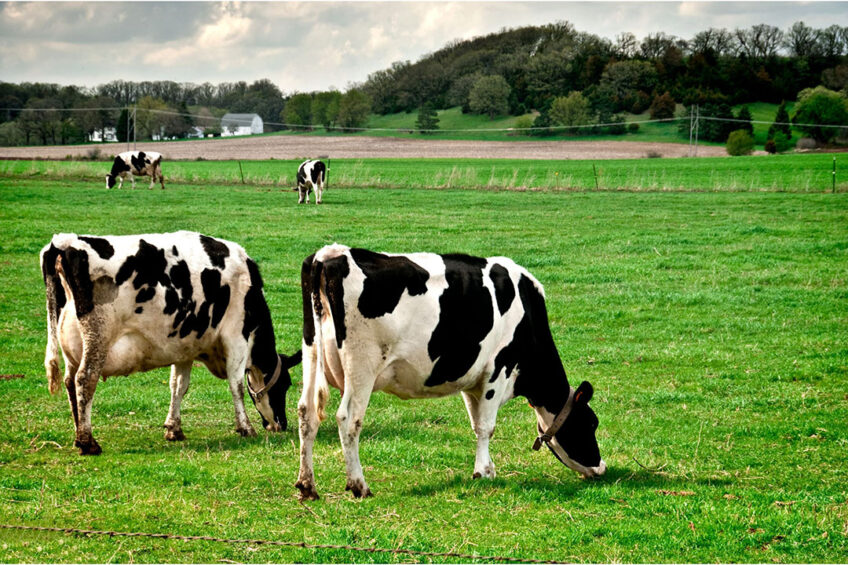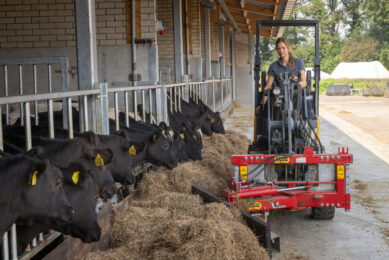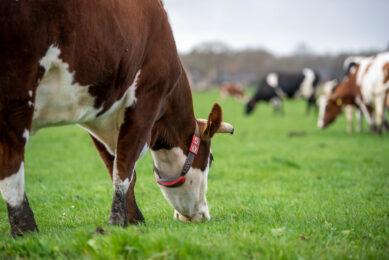UK dairy producers quit as financial situation worsens

Raw milk prices that have dropped below the cost of production are leading UK dairy producers to leave the industry or remodel their businesses.
Dan Miller, head of operations at The Dorset Dairy Company, said he intends to sell the unit’s 180 cows that graze on his third-generation farm at Stalbridge, after which the company will buy in milk from Barbers of Somerset to continue making yoghurt, butter and cream.
Selling cows
Writing on Facebook, he said: “As some of you will know, small dairies cross the UK are struggling with the impact of raw milk prices dropping below the cost of production, with no end in sight to the rising costs of our inputs. This has led us to make the heart-breaking decision to sell the cows…”. He added: “After much soul searching, we have also decided to downsize the Dorset Dairy and sell the milk refill side of the business.”
Global markets are providing little respite for UK dairy farmers, who are battling against declining farmgate prices. The downturn in demand for while milk powder from China and the forward forecasting from Fonterra suggests the rest of the year is set to be an uncomfortable one.
Latest government figures show the average UK farmgate price for milk was 36.48 ppl in June, down 16% on the same period in 2022. But the current cost of production is estimated to be between 40 and 45 ppl, making it unsustainable for many farmers.
Smallest producers most affected
A recent survey by the National Farmers’ Union found that almost 10% of dairy producers are likely to stop producing milk by 2025, with smallest producers – those that produce less than 1 million litres a year – being the hardest hit. The study of 600 dairy farmers found that insufficient returns, volatile markets and the scale of on-farm investment required were all reasons why many were thinking hard about their future in the sector.
In addition, a further 23% of all milk producers said they were unsure about continuing production beyond the next 2 years. The survey also revealed that:
- Increases in input prices such as feed (84%), energy (83%) and fertiliser (74%) were all areas of particular worry.
- Over a third (36%) of those ceasing production are doing so due to retirement, with almost a fifth (18%) handing over their farm to the next generation.
- Over half (52%) of producers stopping production are unable to keep up with the scale of investment required for their enterprise to stay compliant, such as slurry storage. This was a huge concern for most (91%).
The true value of milk
In a bid to overcome the situation, the Farmers’ Union of Wales’ milk and dairy produce committee have backed a plan by NFU Scotland which, they say, could fundamentally alter the dynamics of the UK milk market. The formula, which is based on the widely recognised market indicators of Actual Milk Price Equivalent (AMPE) and Milk for Cheese Value Equivalent (MCVE), in a 20% to 80% split, was identified by a producer working group set up by the Scottish union.
Supporters of the formula believe it could form the foundation for prices which, while continuing to vary between contracts, nevertheless represents the true value of milk. This would reflect a supply and demand dynamic that UK milk prices have failed to recognise over the last decade.
Some supermarkets are recognising the need to support the sector. Sainsbury’s this week announced that its suppliers will be paid more from October after putting in £6 million investment. Acknowledging the financial pressures on the sector, the company said £4.3 million of the new investment will go towards giving farmers an additional 1p per litre for milk on top of the independently calculated Cost of Production price that the retailer currently pays to farmers.
With the typical volume of milk produced per year per farm being roughly 2.7 million litres, this means the average farm could receive around £27,000 extra per year.
Needs of dairy farmers
Perhaps the last word should go to the charity focusing on the needs of dairy farmers. Di Wastenage, Royal Association of British Dairy Farmers chair, said farmers were currently caught in the crossfire: “The difference between the farmgate milk price and retail price is currently a very live issue on farm for our members. Our dairy farmers are facing enormous financial pressures. They are caught in the crossfire with farm gate milk prices remaining low, while farm input costs are stubbornly high and high retail prices are impacting consumer demand too.
“We recognise UK processors also continue to face high energy and labour costs which are reflected in these results. The key difference in the current retail price of cheese is because it is manufactured using higher cost milk from earlier in the year. The UK needs a dairy industry from the farmgate to the supermarket shelf to operate efficiently and profitably for all sectors along the supply chain. We must ensure this happens and that the value is shared with all parties,” she added.
Join 13,000+ subscribers
Subscribe to our newsletter to stay updated about all the need-to-know content in the dairy sector, two times a week.










